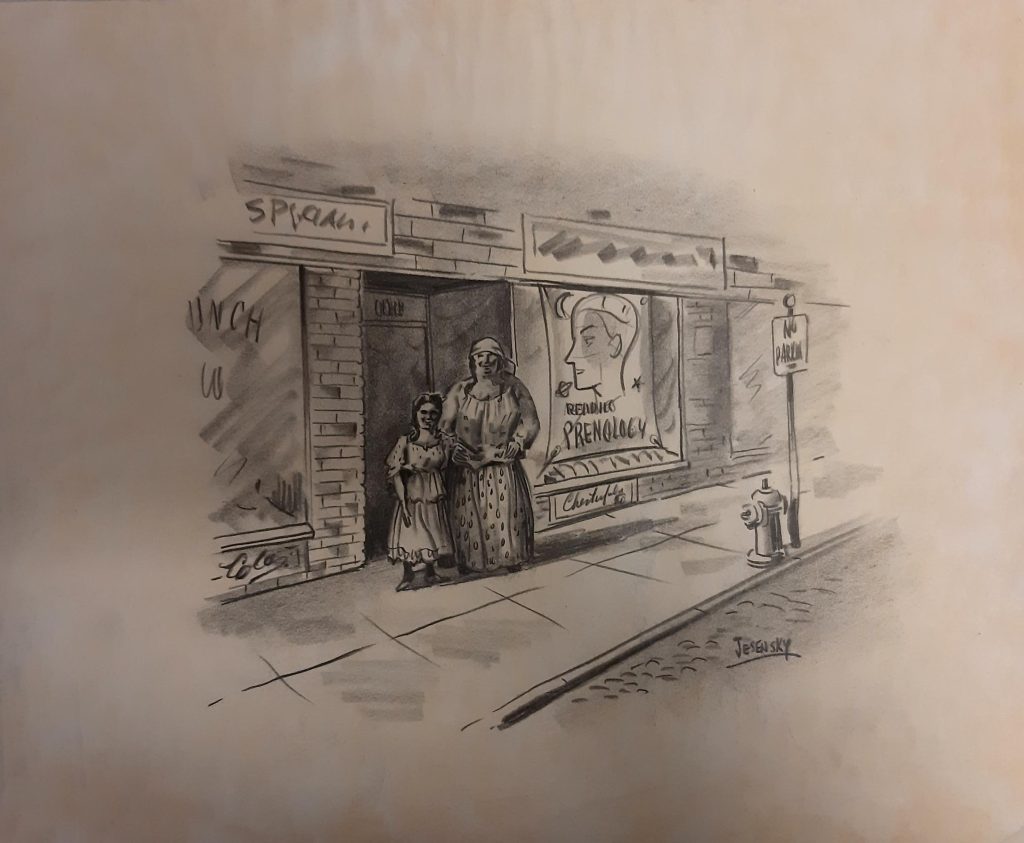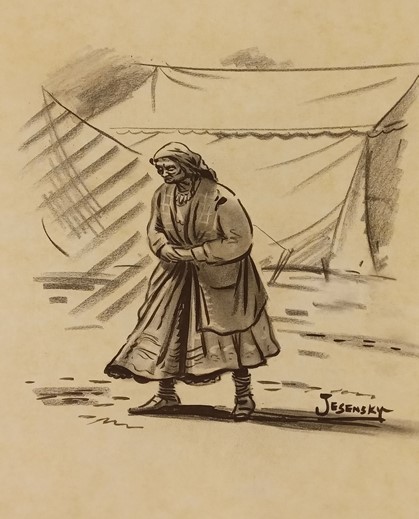The University of Liverpool holds the records of the Gypsy Lore Society 1888-1974. These consist of the administrative files on Gypsy Lore Society members’ Gypsy research and the publication of the Journal of the Gypsy Lore Society (JGLS), including the Scott Macfie Gypsy Collection of books, manuscripts, photographs, illustrations and press cuttings collected by R.A. Scott Macfie and other GLS members.
Every June since 2008, people from across the UK have celebrated Gypsy, Roma and Traveller History Month (GRTHM). GRTHM 2023 celebrates the diverse ways that Gypsy, Roma and Traveller communities add to the vibrancy of life in the UK. This years theme is “Weaving Journeys: A celebration of Gypsy, Roma and Traveller lives, histories and cultures”. The theme focuses on travel, looking at the past and the future. It will ask where Romany Gypsy, Roma, Irish Traveller and other nomadic communities people have travelled before and where they would like to travel next. GRTHM historically coincides with the Appleby Horse Fair which begins from the 8th of June this year. The fair is an annual gathering in the town of Appleby in Cumbria and is one of the largest and historic gatherings held every year in the UK.
Amongst the Gypsy records are a number of artworks and illustrations SMGC2/1 we know very little about. These collections depict Gypsy camps, expressive portraits and lively illustrations of Gypsy life imbedded with Gypsy symbolism and meaning. To mark GRHM 2023 I will look at the Gypsy artwork in our collections. I will focus on a selection of sketches from a series of nine charcoal and ink sketches donated to the Gypsy Lore Society by the American artist Joseph Jesensky.
Jesensky was born in Hungary in 1906 along the Danube River. His parents moved to Ohio when he was 8 years old. The family were living along the banks of the Cuyahoga River in a house on top of Main Street Hill, now Ohio City. The Cuyahoga Valley National Park is now an American National Park that preserves and reclaims the rural landscape along the Cuyahoga River between Akron and Cleveland in Northeast Ohio. As a child and teenager Jesensky enjoyed being in nature and took inspiration from the natural environment surrounding him. He was a talented artist and at the age of 16 he won a scholarship to Cleveland School of Art and Landscape (now the Cleveland Institute of Art). He explored the habitat and landscape. He also volunteered to sketch and record wild flowers and plants in the park and later worked as a forester in the Ohio forestry division. While exploring the area known as the ‘Bedford Reservation’ he describes how he came into contact with a Gypsy camp. He recounts the event in his article which featured in JGLS of 1958 – A Gajo artist Visits American Tent Gypsies.
“One cold day in early spring, years ago, I encountered my first camp of Nomad Gypsies. They were camped at the edge of a small village called Bedford”.
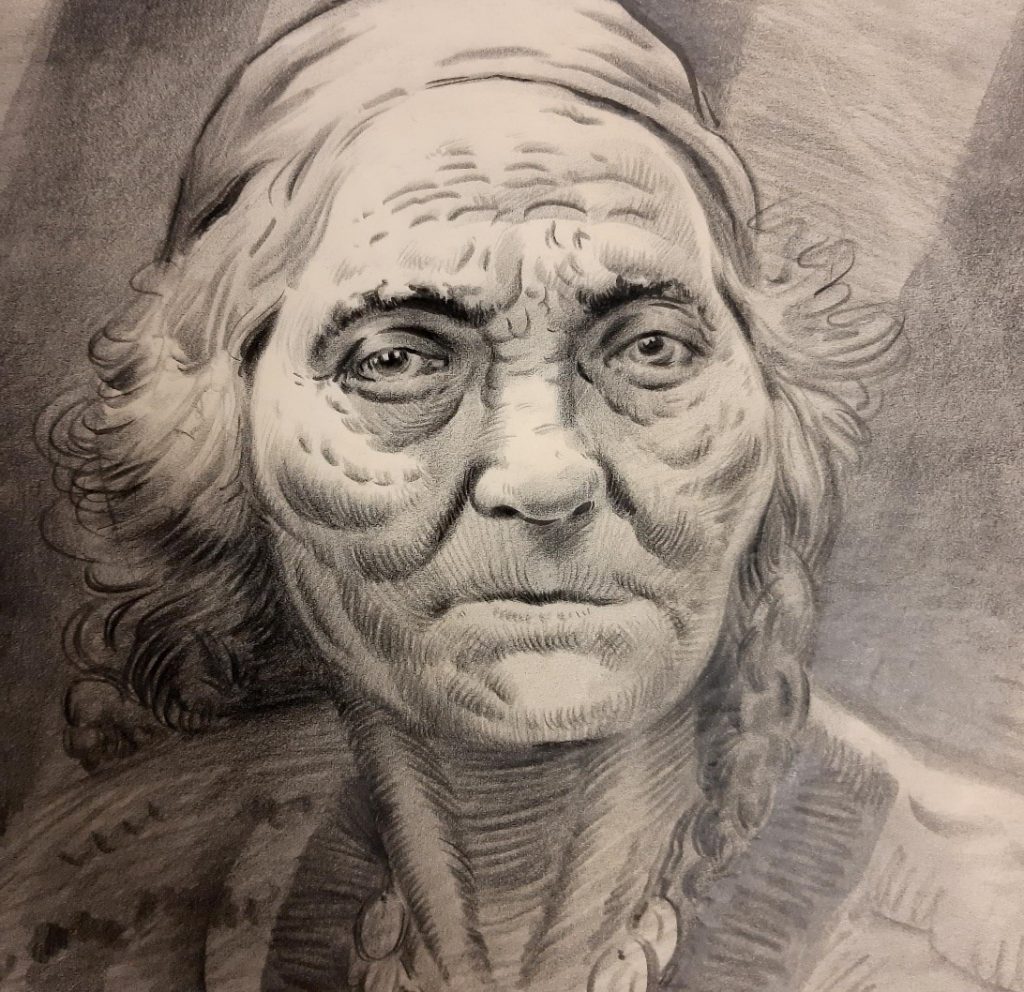
In 1956 Jesensky (a member of the Gypsy Lore Society) donated nine of his sketches to the society. The drawings are all charcoal and ink on paper and consist of striking portraits of gypsies drawn from a Gypsy camp, camped near to the village where he lived in 1929 and 1930.
The Gypsy camp provided Jesensky with plenty of subject matter, mainly women and children as the male members of camp were absent, presumably at work. This pleased Jesensky as he found the dress of the women and children far more interesting to sketch. They were a lively bunch of children and the boys in particular enjoyed posing in acrobatic poses whilst the girls were equally full of “wild action”. It is probably why the sketches we have in the collection are not laden with lots of detail as Jesensky had to sketch quickly and catch the essence and character of the dynamic subject matter. Jesensky would work up his sketches in the studio adding detail and creating new images from his sketches some of which were in colour. Examples of these works can be seen here at summitmemory.org the digitised archive of the Akron-Summit County Public Library.
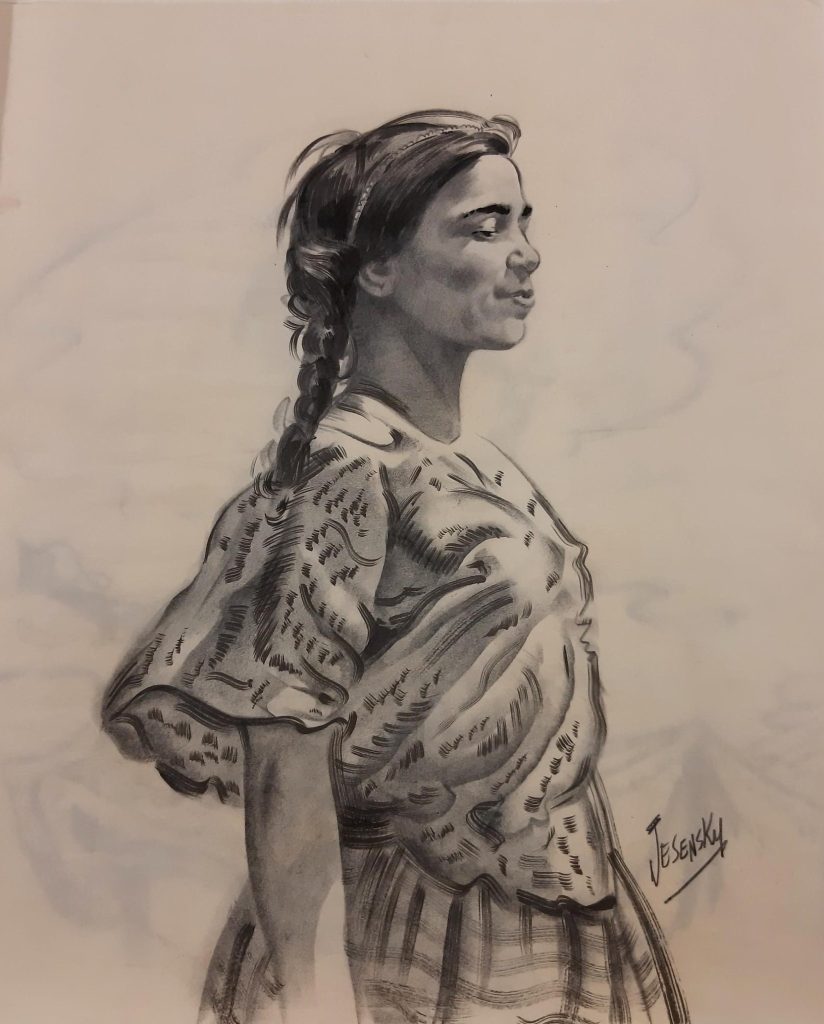
Jesensky was immediately struck by the tents and the billowing smoke from their camp fires and how it “filled the air with a blue haze.” The story of how he became friends with the Gypsy camp unfolds and he describes how when he approached the camp he was surrounded by women and children, the women were keen to read his fortune and the children were begging for sweets and coins. He explained that he would like to sketch them and they “happily agreed.”
Jesensky recounts how a young boy named Dewy or ‘Dui’ (the twin of Vanita above) became one of his best models and friend. Dewy became a self-appointed security guard of the artist’s briefcase containing his sketching materials, not allowing any of the other children to touch them. Dewy became so attached to the artist he tried to persuade the artist to kidnap him!
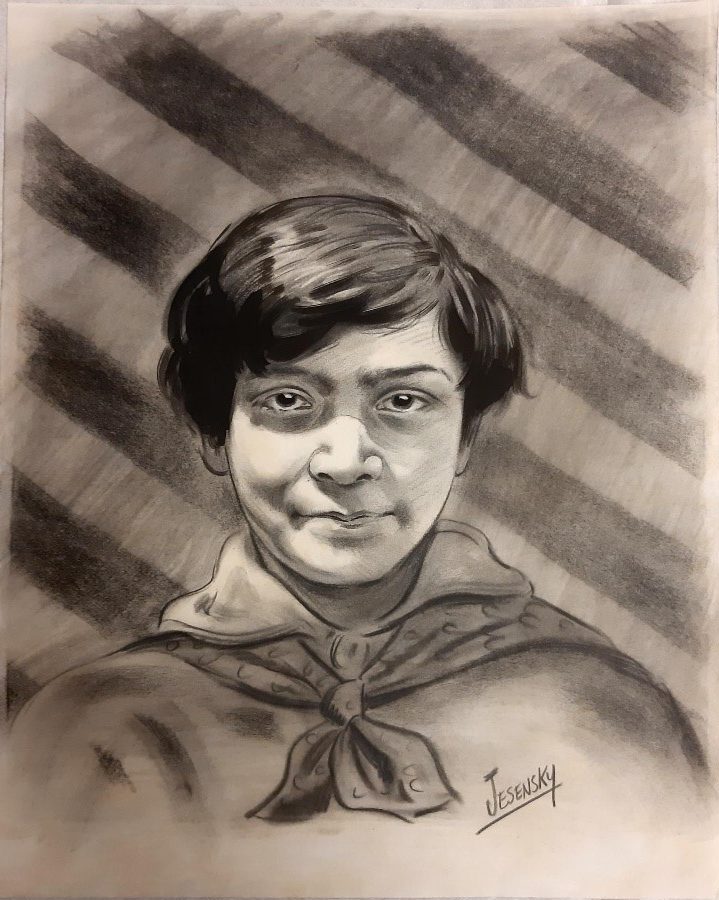
Once Jesensky was familiar to the camp he embraced portraiture with vigour and began to contemplate some of the elder members of the camp. One such model being Sybella, reported to be 100 years old and “Queen of the Gypsies”.
“My best model was an old woman who wore a typical Gypsy costume, complete with heavy gold coins adorning her neck, a tattered greenish sweater coat, and several pairs of old stockings to ward off the chill spring wind, and a diklo draped loosely over straggly grey hair.”
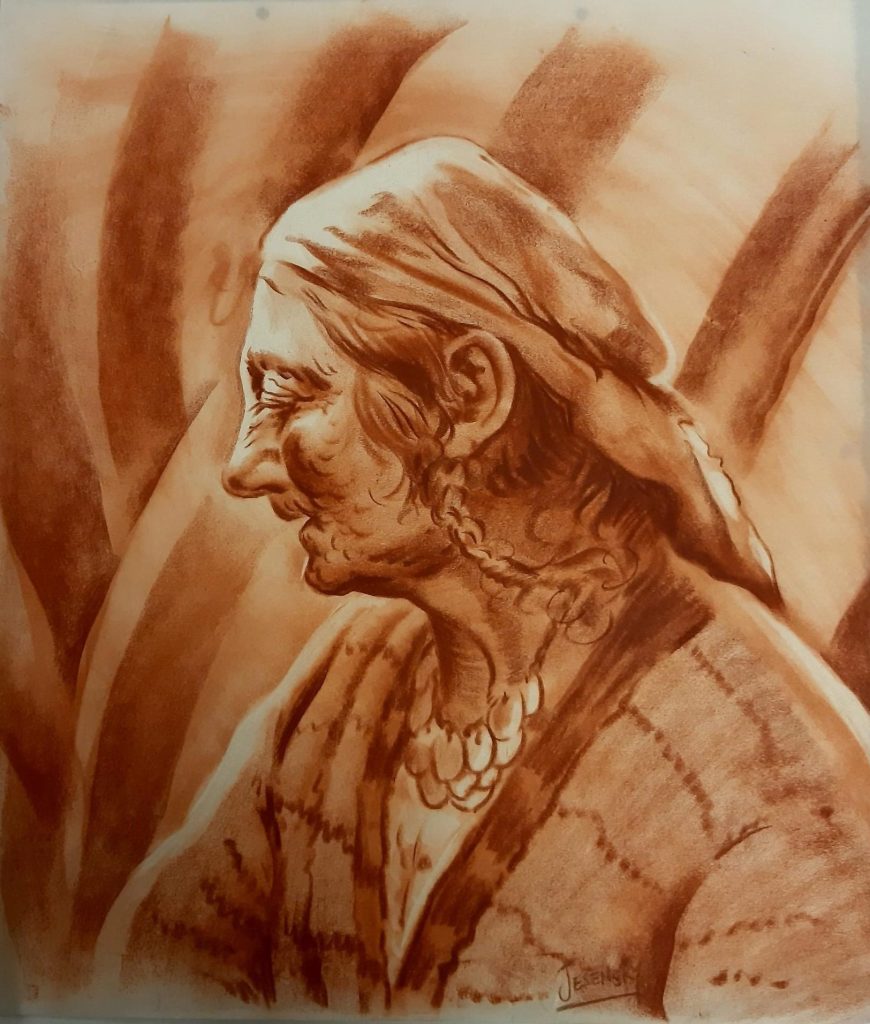
There are three portraits of Sybella in the series of nine. These have a studious, quiet and contemplative quality to them. Sybella was clearly a compelling member of the clan – her unconventional style of dress and wizened appearance made fascinating subject matter for the artist. According to the other women in the camp Sybella was “Queen of the Gypsy” camp as she was purported to be almost 100 years old. Jesensky describes in the article how she was one of his favourite models from the camp.
Below is the sketch which accompanied the JGLS article it was titled Sybella. It depicts a profile portrait of ‘Sybella’ with her hair covered with a patterned scarf, her ears are adorned with heavy coin earrings. Her profile is side lit highlighting her strong features and high cheekbones. However, I think we can agree that in this portrait the sitter doesn’t look almost 100 years old. The portrait is of another gypsy from the Bedford camp named ‘Gizella’. In a document from the Walton Hills Ohio government archives Jesensky writes in his own hand on an annotated copy of his article that “NOTE: This Drawing was used by error- this is Gizella not Sybella”
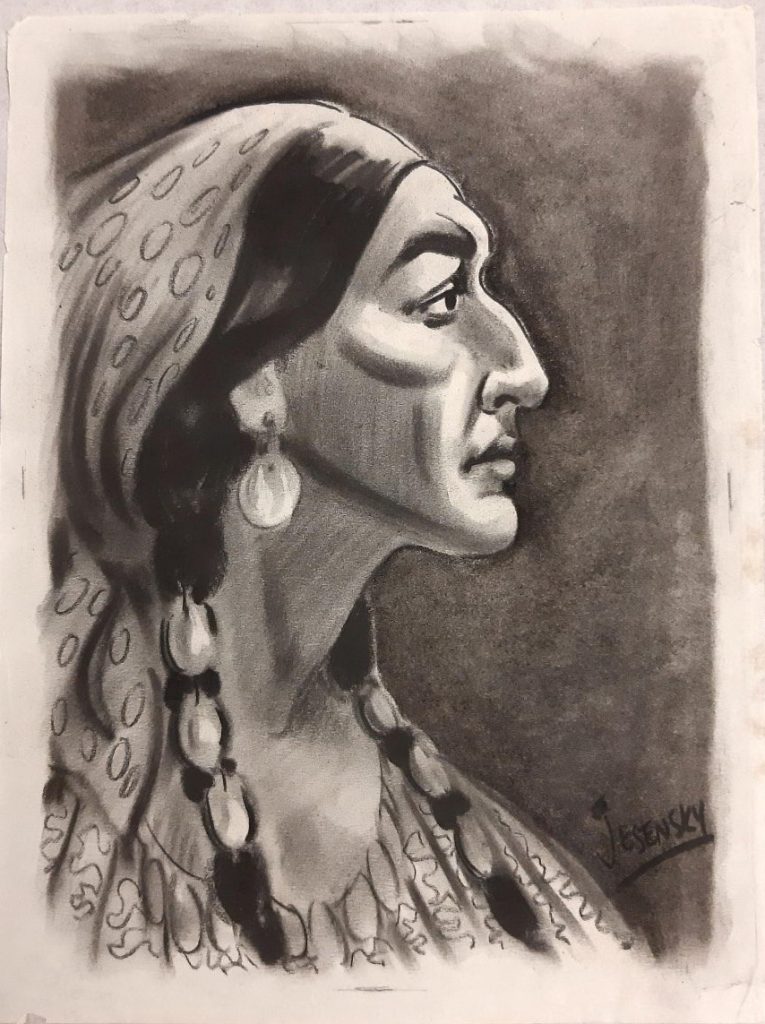

Unfortunately on this occasion the Sybella portrait did not get the opportunity to be seen in publication. Nevertheless there is a distinctive illustrative quality to Jesensky’s style of drawing; the use of charcoal, ink and chalk are used in all nine works. The control of line, blending, smudging, light and shade give an indication of the speed in which he worked to capture the sitters. He was clearly an artist who could produce technical drawings too. When World War II broke out, Jesensky worked in the blueprint department of the Corsair war plane at Goodyear Aircraft (a low altitude interceptor fighter plane conceived in 1939). After the war, he worked for Goodyear Tire and Rubber Company in the graphics department dedicated to visual merchandise, here he created designs, layouts, cartoons and presentation portraits for colleagues and clients.
Throughout his life he continued to paint, write and draw. His connection and knowledge of the landscape and the people who lived there made him a well-liked and revered local historian. He was a valuable member of the Cuyahoga Valley Archaeology Society and the Ohio Parks and recreations. In 1989 he won “Citizen of the Year” for his work and endeavours. After this long and useful life Jesensky lived until he was 101 years old. He died in June 2008 and lived one year longer than Sybella.
References
All images taken by Lorna Sergeant.
https://www.summitmemory.org/digital/collection/jesensky
http://waltonhillsohio.gov/en-US/Historical-Documents-test.aspx
